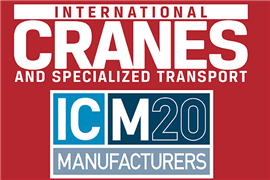Can digital innovations support a greener construction industry?
19 June 2023
A recent report published by GS1 New Zealand details how the construction industry can leverage digital tools to achieve its net-zero objectives. The report also highlights why standardised data models have a key role to play in making these tools more effective.
As contributors to GS1’s research, Cobuilder has drawn up a summary to discuss the essential points from the report and share key takeaways for stakeholders in construction who are considering how they can better manage data to create ‘greener’ building projects.
New regulations
 The development, adoption and commercial use of digital data templates are being pioneered in the European Union (Photo: AdobeStock)
The development, adoption and commercial use of digital data templates are being pioneered in the European Union (Photo: AdobeStock)
The report begins by outlining how New Zealand has committed to reducing its greenhouse gas emissions and is aiming to become carbon neutral by 2050. The country’s government has also regulated product information disclosure requirements in the construction industry, which will come into force in December 2023.
These regulations will require manufacturers to ensure that the designated building products they supply to their customers and any other stakeholders include relevant and up-to-date product information. This information must be made publicly available.
It will therefore be essential that all organisations in the construction supply chain consider data about raw materials and objects over a building’s entire lifecycle. This includes the initial construction phase, which covers planning and design, the operational and maintenance phase, and finally disposal or recycling at the end of its lifecycle.
Challenges of data capture
Achieving this is not straightforward, however. Challenges exist that are preventing this product information from being captured and shared accurately in digital formats. The report notes that ‘New Zealand is far from the frontier of digitisation of construction products, objects and structured data templates.’
In our experience – and as the report demonstrates – many organisations have poor information management processes. There is still a reliance, for instance, on PDF files or paper-based methods when sharing information about construction products, objects and materials. These manual processes create extra costs and inefficiencies. Data collection efforts are often duplicated, with multiple actors drawing on their pools of data and operating in silos.
What these organisations require is a standardised, common digital language that will support data exchange between different players across the construction value chain. GS1’s report outlines that one method for achieving this is by using digital data templates.
The development, adoption and commercial use of digital data templates is being pioneered in the European Union. These templates can help to support the exchange of construction object data, making it more accessible, shareable and reusable across organisations. They are being used to communicate information about building elements, materials, products and systems through digital means across the entire construction value chain.
The Define use case
As part of our contribution to the report, we demonstrated how this approach can work in practice using our Define platform – and how it will help organisations in gathering environmental product information.
 The report notes that ‘New Zealand is far from the frontier of digitisation of construction products, objects and structured data templates (Photo: AdobeStock)
The report notes that ‘New Zealand is far from the frontier of digitisation of construction products, objects and structured data templates (Photo: AdobeStock)
The platform enables organisations in construction to author, share and manage data templates within a common data dictionary framework. In this way, validated data, which meets all the relevant international standards for data management, can flow between different systems and authoring tools. Everyone can then understand and interpret it similarly – regardless of role, organisation or location.
We developed two digital data templates as a proof of concept for GS1 – both for objects that are imported into New Zealand. One was for a window system and the other was for a piece of structural timber. Product and attribute information for each object was entered into the templates.
These templates were demonstrated to stakeholders and any questions about functionality were answered. The stakeholders included large construction sector suppliers and merchants and government procurement agencies. Interviews were conducted to collect their responses to the templates as part of the report.
Few of the stakeholders interviewed had been previously aware of the opportunities offered by the use and implementation of structured product data, digital data templates and global standards.
The report highlights the value to be gained from digital templates when it comes to managing the data from environmental product declarations (EPDs) and lifecycle assessments (LCAs) – both of which are now being used to measure the environmental performance of buildings.
What is the future of data management?
GS1’s report shares that once recorded in a digital data template, data can be used for multiple purposes, including in building information modelling (BIM) systems or for facilities management. The templates are helping to digitalise data management methods and enabling organisations to meet their commitments to the circular economy.
Circular construction is detailed within the report as a key objective for many countries, particularly in Europe. Circularity aims to ensure that any products or materials can be reused, repaired or recycled to cut down on waste and prevent over-consumption. Having information to hand about a material can help to build a full picture of how it can be used at the end of its life and lead to more sustainable construction methods.
The report also shares how digital product passports (DDPs) are being proposed as a mechanism for EU economies to support sustainable consumption and production, resource flows and supply chain management. They will help organisations to uniquely identify products and associated information requirements through international standards. Once again, standardised data will be an essential tool to make these passports the most effective.
The construction industry is moving towards better data management and gaining a greater understanding of how this can help it to reach net zero. As evidenced by GS1’s report, though, there is still some way to go before the methods to make this happen are widely adopted.
The implementation of digital data templates is the missing piece of the puzzle for the industry in defining, structuring and exchanging product information more easily between organisations. Through their adoption, the industry will be able to achieve a higher degree of digitalisation and ultimately enable greener construction methods.
The full report by GS 1 New Zealand is available for download here.
STAY CONNECTED


Receive the information you need when you need it through our world-leading magazines, newsletters and daily briefings.
CONNECT WITH THE TEAM











